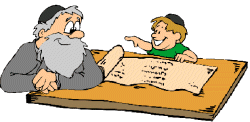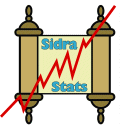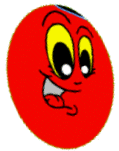VaYakhel
וַיַּקְהֵל
Exodus 35:1 – 38:20
The Sabbath
Moses assembled the entire Israelite community and said to them, “These are the words that HaShem has commanded for you to do: You may do work during the six weekdays, but Saturday must be kept holy as a Sabbath of Sabbaths to HaShem. Whoever does any work on that day shall be put to death. Do not ignite any fire on the Sabbath, no matter where you may live.”
Materials for the Tabernacle
Moses said to the entire Israelite community, “This is the word that HaShem has commanded: Collect among yourselves an elevated offering to HaShem. If a person feels like giving an offering to HaShem, he can bring any of the following: gold, silver, copper, sky-blue wool, dark red wool, wool died with the crimson worm, fine linen, goats’ wool, reddened ram’s skins, blue processed hides, acacia wood, oil for the lamp, fragrances for the anointing oil and perfume incense, as well as sardonyxes and other precious stones for the ephod and the breastplate.
Every naturally talented individual among you shall come forth and make all that HaShem has ordered: The tabernacle along with its over-tent, roof, fasteners, beams, crossbars and pillars; the ark and its carrying poles, the ark cover, the cloth partition; the table along with its carrying poles, all its utensils and the showbread; the menorah lamp along with its utensils, lights and illuminating oil; the incense altar and its carrying poles; the anointing oil, the perfumed incense, the drape for the tabernacle’s entrance; the sacrificial altar along with its carrying poles and all its utensils; the washstand and its base; the hangings for the enclosure, its pillars and bases, the drape for the enclosure’s entrance; the stakes for the tent, the stakes for the enclosure, the tying ropes; the packing cloths for sacred use, the sacred vestments for Aaron the priest, and the vestments that his sons will wear to serve.”
The entire Israelite community left Moses’ presence.
Each person who was ready to volunteer then came forward. Also each one who wanted to give brought a donation to HaShem for the making of the Communion Tent, all its necessities, and the sacred vestments.
The men accompanied the women, and those who wanted to make a donation brought bracelets, earrings, finger rings, and body ornaments, all made of gold. There were also all the ones who donated a wave offering of gold to HaShem.
Every person who had sky-blue wool, dark red wool, crimson wool, fine linen, goats’ wool, reddened rams’ skins or blue processed hides, brought these items.
Whoever donated silver or copper brought it as a divine offering, and anyone who had acacia wood that could be used for the dedicated work, also brought it.
Every skilled woman put her hand to spinning, and they all brought the spun yarn of sky-blue wool, dark red wool, crimson wool and fine linen.
Highly skilled women volunteers also spun the goats’ wool.
The tribal leaders brought the sardonyxes and other precious stones for the ephod and breastplate, as well as the fragrances and olive oil for the lamp, the anointing oil, and the perfumed incense.
Every man and woman among the Israelites who felt an urge to give something for all the work that HaShem had ordered through Moses, brought a donation for HaShem.
Appointing the workers
Moses said to the Israelites: HaShem has selected Betzalel son of Uri son of Chur, of the tribe of Judah, and has filled him with a divine spirit of wisdom, understanding, knowledge, and a talent for all types of craftsmanship. He will thus be able to devise plans, work in gold, silver and copper, cut stones to be set, and do carpentry and other skilled work.
HaShem also gave to him and Oholiav son of Achisamakh, of the tribe of Dan, the ability to teach others. He has granted them a natural talent for all craftsmanship, to form materials, to brocade or embroider patterns with sky-blue, dark red and crimson wool and fine linen, and to weave. They will thus be able to do all the necessary work and planning.
Betzalel shall thus do all that HaShem commanded, along with Oholiav and every other skilled individual, to whom HaShem has granted the wisdom and understanding to know how to do all the work necessary for the sacred task.
Moses summoned Betzalel, Oholiav, and all the other skilled individuals upon whom G-d had bestowed a natural talent, all who volunteered to dedicate themselves to completing the task. In Moses’ presence, they took the entire donation that the Israelites had brought to complete the work on the sacred task.
Meanwhile, the Israelites were bringing more gifts each morning.All the craftsmen engaged in the sacred work left the work they were doing, and came to Moses. They said to Moses, “The people are bringing much more than is needed for the work that HaShem commanded to do.”
Moses gave orders to make an announcement in the camp, “Let no man or woman bring any more material for the sacred offering.”
The people stopped bringing, but the materials were more than enough for all the work that had to be done.
Making the Tabernacle
All the most talented craftsmen worked on the tabernacle itself, which consisted of ten tapestries made of twined linen, together with sky-blue, dark red and crimson wool, brocaded with cherubs. 9 All the tapestries were the same size, 28 cubits long and 4 cubits wide. The first five tapestries were sewn together, as were the other five.
Loops of sky-blue wool were made on the innermost tapestry of the second group of five.
There were 50 loops on the first tapestry, and 50 on is counterpart on the second group, with all the loops on one side parallel to those on the other side. Fifty gold fasteners were made to attach the sets of tapestries together to make the tabernacle into a single unit.
Making the Over-tent
They made sheets of goats’ wool for the over-tent covering the tabernacle. There were 11 such sheets, and all 11 were the same size, 30 cubits long, and 4 cubits wide.
Five sheets were sewn together to form one group, and six to form the second group. Fifty loops were made on the innermost sheet of the first group, and another fifty on the innermost sheet of the second group.
They made 50 copper fasteners to join the over-tent together and make it a single unit. They made a roof for the tabernacle out of reddened rams’ skins, and another roof above it out of blue processed hides.
Making the Beams
They made the upright beams for the tabernacle out of acacia wood. Each beam was 10 cubits long and 1 and a half cubits wide, 2 with two matching square pegs on the bottom. All the tabernacle’s beams were made in this manner.
They made 20 beams for the southern wall of the tabernacle, along with 40 silver bases to go under the 20 beams. There were two bases under each beam, one base going under each of the two square pegs on the bottom of each beam.
On the second wall of the tabernacle to the north, they also made 20 beams, along with 40 silver bases, two bases under each of a beam’s two pegs. For the western wall of the tabernacle, they made 6 beams, along with two finishing beams for the corners of the tabernacle.
At the bottom, all the beams were joined next to one another exactly, and on top, every pair was joined with a square ring. This was also true of the two beams on the two corners. Thus, on the west side, there was a total of 8 beams, along with 16 bases, two bases for each beam.
They made 5 crossbars of acacia wood for the first wall of the tabernacle to the south, a second set of 5 crossbars for the second wall of the tabernacle to the north, and 5 similar crossbars for the western wall of the tabernacle. The middle crossbar was made to go through the center of the beams from one end to the other.
They covered the beams with a layer of gold. They also made the rings that would hold the crossbars out of gold, and they covered the crossbars themselves with a layer of gold.
They made the cloth partition out of sky-blue, dark red and crimson wool and twined linen, brocaded with cherubs. They made four acacia poles to hold it, covering the poles with a layer of gold with gold hooks attached. They also cast four silver bases for these poles.
They made an embroidered drape for the tent’s entrance out of sky-blue, dark red and crimson wool and twined linen. There were five poles to hold it, along with gold hooks, caps and bands. There were also five copper bases for these poles.
Making the Ark
Betzalel made the ark of acacia wood, 2 and a half cubits long, 1 and a half cubits wide, and 1 and a half cubits high. He covered it with a layer of pure gold on the inside, and made a gold rim for it all around. He cast four gold rings for its four corners, two rings for one side, and two for the other. He made carrying poles of acacia wood and covered them with a layer of gold. He then placed the carrying poles in the rings on the ark’s sides, so that the ark could be carried with them. He made a pure gold cover, 2 and a half cubits long and 1 and a half cubits wide. He made two golden cherubs, hammering them out from the two ends of the cover.
The cherubs were made on both ends from the same piece of metal as the cover itself, one cherub on one end, and one on the other. The cherubs had their wings outstretched upward so as to shield the ark-cover with their wings. They faced one another, with their faces somewhat inclined downward toward the cover.
Making the Table
He made the table out of acacia wood, 2 cubits long, one cubit wide, and 1 and a half cubits high. He covered it with a layer of pure gold, and made it a gold rim all around. He made a frame for it, one handbreadth wide, and placed the gold rim on the frame. He cast four gold rings for the table, placing the rings on the corners of its four legs. The rings were adjacent to the frame, and were meant to hold the poles used to carry the table. He made acacia poles to carry the table, and covered them with a layer of gold.
He made the utensils to go on the table, bread forms and incense bowls, as well as half tubes and side frames to serve as dividers for the bread, all out of pure gold.
Making the Menorah
He made the menorah out of pure gold, hammering the menorah along with its base, stem, and decorative cups, spheres and flowers, out of a single piece of metal. Six branches extended from the menorah’s sides, three on one and three on the other. There were three embossed cups, a sphere, and a flower on each branch. This was true of all six branches extending from the menorah. The menorah’s shaft had four embossed cups, along with its own spheres and flowers. There was a sphere at the base of each of the three pairs of branches extending from the stem. This was true of all six of the menorah’s branches.
The spheres and branches were all made from the same ingot as the menorah itself. It was all hammered from a single piece of pure gold. He thus made the menorah with seven lamps. He also made its wick tongs and ash scoops out of pure gold. The menorah and all its parts were made from a talent of gold.
Making the Incense Altar
He made the incense altar of acacia wood, one cubit square, and, including its horns, two cubits high. He covered its top, its walls all around, and its horns, with a layer of pure gold, and made it a gold rim all around.
He made two rings [for the altar] below its rim on its two opposite sides, so as to hold the poles with which the altar was carried. He made the carrying poles out of acacia wood, and covered them with a layer of gold.
Using the techniques of a perfumer, he made the sacred anointing oil and the pure perfume incense.
Making the Sacrificial Altar
He made the sacrificial altar out of acacia wood, five cubits square, and three cubits high. He made the protrusions on all four corners as an integral part of the altar’s structure, and then covered the entire structure with a layer of copper. He made all the altar’s utensils, pots, scoops, sacrificial basins, flesh pokers, and fire pans. They were all made out of copper. He made a screen out of copper mesh, and placed it below the altar’s decorative border, extending downward until the middle of the altar.
He cast four rings on the copper screen to hold the carrying poles. He made acacia carrying poles and covered them with a layer of copper. He placed the carrying poles in the rings on the altar’s corners, so that it could be carried. He constructed the altar as a hollow structure made out of boards.
Making the Washstand
He made the copper washstand and its copper base out of the mirrors of the dedicated women who congregated at the entrance of the Communion Tent.
Making the Enclosure
He made the enclosure for the tabernacle.
On the south side, the twined linen hangings were 100 cubits long, held by 20 poles, with 20 copper bases and silver pole hooks and bands.
On the north side, it was also 100 cubits long, held by 20 poles, with 20 copper bases and silver pole hooks and bands. On the west side, the curtains were 50 cubits, held by 10 poles, with 10 bases and silver pole hooks and bands. The east side was also 50 cubits wide.
The hangings on one side, of the enclosure were 15 cubits long, held by three poles with three bases. The same was true of the other side of the enclosure’s entrance, so that the hangings there were also 15 cubits wide, held by three poles with three bases.
All the enclosure’s hangings were made of twined linen.
The bases for the poles were made of copper, while the pole hooks and bands were made of silver. All the enclosure’s poles also had silver caps, and the poles themselves were ringed with silver.
The drape for the enclosure’s entrance was embroidered out of sky-blue, dark red and crimson wool, together with twined linen. It was 20 cubits long, and 5 cubits wide, just like the other hangings of the enclosure. It was held with four poles, having four copper bases, and silver hooks, caps and bands. All the stakes used for the tabernacle itself and the surrounding enclosure were made of copper.
Haftarah Connection

I Kings 7.40-50
In this week’s Parsha it relates the actual building of the Mishkan and the things that went into it.
The Haftara relates to the building of The First Temple by King Solomon.
Sidra Stats

- Twenty-Two of 54 Sedras in the Torah
- Written on 211 lines in the Sefer Torah
- 122 P’sukim (verses)
- 1,558 words
- 6,181 letters
Next week’s Parashat: Pekudey


